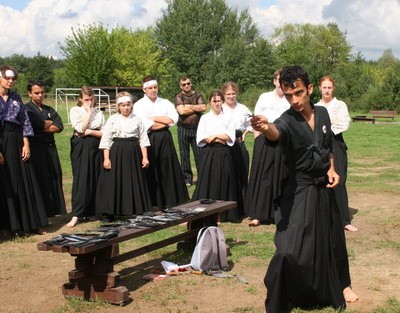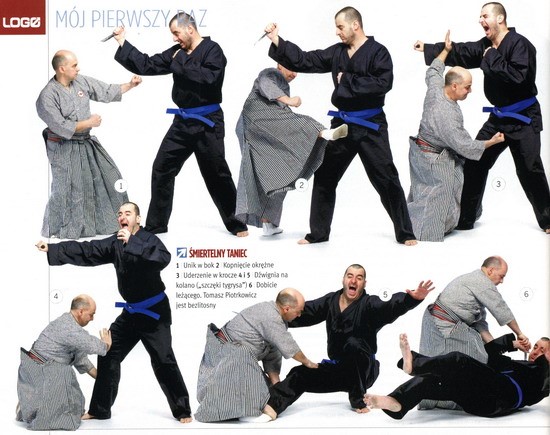


Tanto-jutsu – 短刀術
Tanto-jutsu is a Japanese art of knife fighting (according to Japanese standards, a short blade with less than one shaku length – less than 30 cm).
The knife is one of the most important tools accompanying man from the beginnig of his history to modern times. A great utility tool, decorative, ritual, but also a dangerous weapon, available all over the world.
Made at the beginning of wood, flint, bronze, it experienced its heyday by receiving a steel, hardened blade, in some cultures forged and polished with extreme precision as the shortest „samurai sword”, rendering the last service (seppuku).
The knife fighting section of the European Budo Association educates experts in the use of a knife in defensive combat, teaches bare hand defense against an attacker armed with a knife, especially in situations of intimidation and blackmail with a knife, teaches knife defense against other dangerous tools.
We teach Japanese methods of tameshigiri – cutting mats and bamboo using tanto – samurai knife and shuriken – throwing blades. We also teach how to fight with a hanbo baton and how to use the yawara (kubotan) self-defense tool.
We also offer the possibility of sports confrontation, because knife fighting is one of the competitions of spochan, sports chanbara – modern Japanese fencing with the use of various weapons.
We try to draw both from the European tradition of using the knife and from Asian methods of knife fighting, especially Japanese and Filipino schools.
Hanshi Tomasz Piotrkowicz has been a martial arts instructor since 1970. He has many years of experience in hand-to-hand combat without the use of weapons (karate, jiu-jitsu, European boxing), as well as in samurai fencing and the use of other white weapons. He is the only instructor in Poland and one of the few outside Japan with the rank of 5th dan in tanto (knife) combat, given to him by Japanese masters almost fifteen years ago. Hanshi Piotrkowicz is the author of five books on Japanese martial arts, many broadcasts and training videos.




Tanto training can be started in a sports outfit, barefoot. You need both a wooden knife and a soft tanto with a special mask (men). Only after passing the 6th kyu degree (first rank) is the adept obliged to have a black outfit of the traditional kuro tanto-keikogi (black cotton sweatshirt, black cotton shitabaki pants (dress analogous to karate or judo) with a cotton obi belt in the appropriate color, reflecting his school degree. Each obtained training degree (and later master rank) is confirmed by a special certificate (diploma) and is a measurable proof of progress in mastering tanto-jutsu.
Holders of higher kyu training degrees must obtain real tanto (sharp) and throwing blades (shuriken). Holders of master dan degrees also practice with European knives and daggers.
